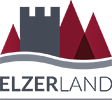Juniper heathlands, Vordereifel region
Arft
The juniper heathlands of the Vordereifel region are a real insider tip.
They were created as a result of a particular form of land management.
Here are a few of the rare species (which even include species that are specially protected under European law) to be found in the juniper heathlands in the East Eifel:
- Birds such as the hazel grouse, woodlark, kite, red-backed shrike, sparrowhawk, meadow pipit or great grey shrike
- Insects such as the green hairstreak, large tortoiseshell, fritillary and many other butterflies and beetles
- Plants such as juniper, erica (heather) or mat grass, arnica, orchids, wood hyacinths and similarly rare plants that prefer dry, light-soil open land habitats.
The juniper heathlands of the Eifel - and therefore also of the Vordereifel region - differ from those in northern and southern Germany, particularly due to their considerable areas, their position on hill summits, their landscape history and the constant change between open and semi-open cultivated landscape. Apart from the Eifel, such spaces no longer exist in Central Europe, or if so, only under constricted conditions.
The hiking trail “Juniper dream path” (“Traumpfad Wacholderweg”) leads you through the wonderful, unique landscape of the juniper heathlands.
















